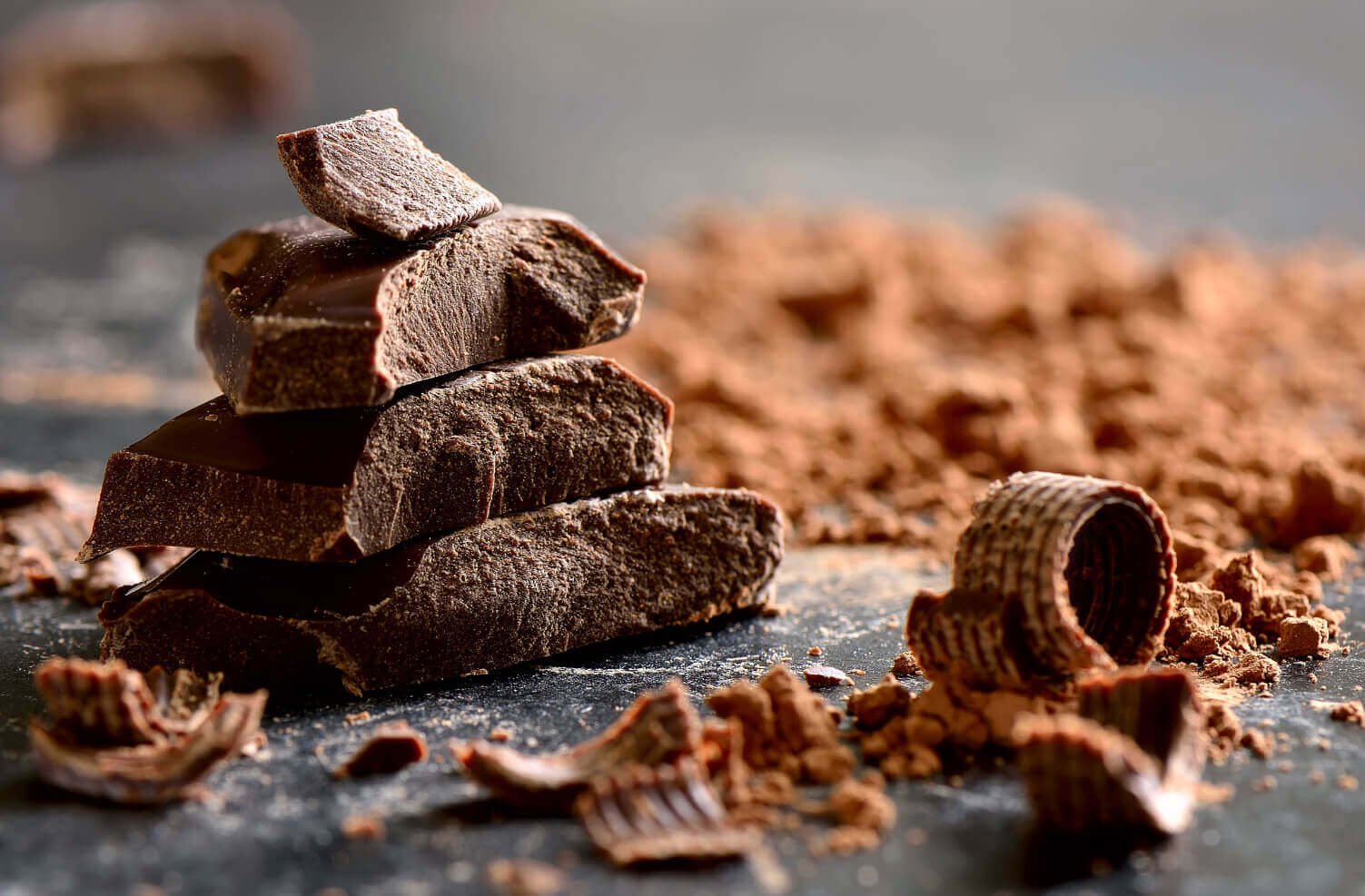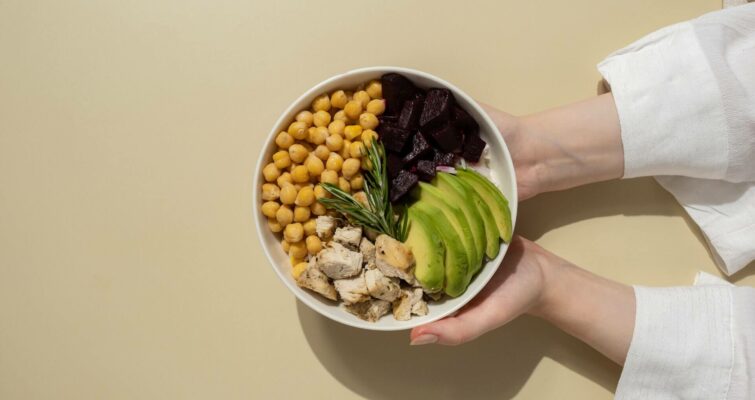Knowing what to eat on your period—and during the other phases of your cycle can make all the difference in how you feel. So many women suffer with menstrual cramps, mood swings, and a variety of premenstrual symptoms like headaches and fatigue. This can be due to many factors, including hormone imbalance and a lack of nutrients. The best way to support healthy hormone balance and encourage a comfortable period is through diet. Let’s find out what foods to eat during your cycle, and the overall do’s and don’ts for a more comfortable period.
Join us to learn more about healthy hormones and holistic wellness inside my membership, the Superwoman Circle.
How does diet affect my menstrual cycle?
Certain foods can help to support optimal hormone function, while others can disrupt it. Our modern diet contains a lot of foods that can disrupt hormones in a significant way, Ultra-processed foods, refined carbohydrates, and other junk foods laden with artificial ingredients.
When you have imbalanced hormones, one of the first places you’ll notice it is often with changes to your menstrual cycle. It might come earlier, later, or you may have worsening menstrual pain, bloating, or fatigue.
If your period is uncomfortable, irregular, very light, or very heavy, this could be an indication that you need more nutrients from your diet for proper menstrual flow and hormone health. A low-quality diet has been shown to worsen PMS symptoms, contribute to fertility struggles, and contribute to overall hormone imbalances (1).
Learn more: Why is My Period Shorter? 6 Reasons to Consider
Eating healthier can improve menstrual symptoms
But don’t worry, because no matter where you’re starting from, studies show that improving diet and lifestyle factors is an effective treatment for hormone-related issues like PCOS and premenstrual syndrome (2). A good quality diet that provides plenty of nutrients supports hormone balance and a more comfortable period for women.
Read: Chinese Medicine Seed Cycling for Hormone Balance
The best diet for a healthy cycle
Your monthly cycle doesn’t have to be an uncomfortable experience, and in fact, the foods you eat throughout the month make a big difference in how you feel at each phase during your cycle.
At every phase of your cycle, it’s important to focus on:
- Nutrient-dense vegetables provide fiber and dozens of different vitamins and minerals that protect your immune system, detox excess hormones, and help build healthy cells.
- Antioxidant-rich fruits like kiwi, citrus, papaya, pineapple, and others help fight free radical damage and reduce inflammation.
- Quality proteins like chicken & poultry, grass-fed red meats, eggs, Greek yogurt, and cheese. Most of these proteins provide iron, which is a key nutrient for any woman who is cycling. They also help provide amino acids you need to build and repair DNA and other cells.
- Healthy fats, like omega-3s, from salmon, tuna, flaxseeds, and chia seeds. Other sources of healthy fats include olive oil, coconut or coconut oil, avocados, and nuts and seeds.
Read: Nutrition Basics for Women: The Beginner’s Guide
Foods to eat for period health
The real comfort foods during your period will supply the nutrients, like iron and vitamin B6, that your body needs to relax and make cramps or PMS symptoms a little less difficult.
For more natural hormone support, check out Hormone Helper, carefully formulated to address the top concerns for women who want a better period.
Avocado
Avocados are great sources of a variety of nutrients that help with menstrual cramps and other period symptoms. Minerals like potassium and magnesium help relax your muscles, and metabolize excess estrogen that can often worsen cramps. Magnesium deficiencies are common in women, and this could be one reason you experience worse menstrual pain.
Avocados are also a good source of B vitamins, healthy fats, and dietary fiber. They’re great to support balanced blood sugar, which is crucial if you have a hormone issue like PCOS.
Read: The Best Supplements for PCOS
Broccoli
Broccoli is part of the cruciferous vegetable family, along with kale, cauliflower, and leeks. These types of vegetables are cycle health superheroes, and here’s why. They contain a special compound called indole-3-carbinol (IC3) that helps regulate estrogen in the liver and digestive system. Eating more broccoli and cauliflower is especially beneficial to balance hormones, and help reduce excess estrogen.
If you have symptoms of estrogen dominance, like tender breasts, period pain, or mood swings before your period starts, eating more cruciferous vegetables may help!
Read more: Signs of Estrogen Dominance + 6 Steps to Fix It
Kiwi
Kiwi and other fruits that are rich in vitamin C and antioxidants, like bell peppers, citrus fruits, and Brussels sprouts help your body make progesterone, which is incredibly important for a healthy period, ovulation, and fertility (3). Vitamin C is a potent antioxidant that helps fight inflammation. High levels of inflammation can contribute to hormone imbalances, and make hormone-related conditions worse.
Sweet potatoes
You might’ve heard about bananas being a great source of potassium, but sweet potatoes blow the competition out of the water at almost 700 mg per sweet potato—which is about 15% of the daily recommended intake. Potassium helps fight period cramps and ease tense muscles, and may also help with bloating.
In one study, a potassium-based supplement helped women who were experiencing painful periods perform in exercise almost to the same level they were able to when not on their period (4). The placebo group didn’t experience these effects, which led the researchers to attribute the positive effects to the potassium.
Wild-caught salmon
Fish, including salmon, is a good source of vitamin B6, which is important for two different reasons having to do with period health.
One, B6 supports your adrenal glands, which are responsible for manufacturing almost all your body’s various hormones. And two, when paired with magnesium, B6 has been shown to be effective at reducing the severity of premenstrual symptoms and cramps during your period (5).
You’ll also find B6 and magnesium in Boost to support healthy hormones, mood, and mental health.
Dark chocolate

Reach for dark chocolate that’s at least 70% cacao. It might not be quite as sweet as the milk chocolate variety, but it contains magnesium and fiber to help with PMS symptoms like cramps and bloating. And, thanks to its naturally occurring flavanols and antioxidants, it actually has a slight serotonin-boosting effect.
Try these! 5 Fresh Summer Desserts that Won’t Wreck Your Hormones
Walnuts
A lot of nuts are great sources of omega-3 fats, and this includes walnuts. These essential nutrients help decrease inflammation throughout your body, which can ease cramps, PMS symptoms, and even acne.
You could also drizzle a little melted dark chocolate over a handful of walnuts for a delicious but still good-for-you dessert!
Foods that ease cramps
There are some foods that can help to ease cramps:
- Foods high in magnesium, such as dark leafy greens, pumpkin seeds, and dark chocolate can help to relax muscles and ease cramps.
- Peppermint tea has been shown to be an effective natural remedy for cramps and bloating (6).
- Omega-3 fatty acids found in salmon, tuna, avocados, and nuts can also help to reduce inflammation and ease cramps.
- Ginger is a great way to naturally reduce PMS symptoms (7). Sipping on ginger tea or adding fresh ginger to your meals can help to ease cramps and other physical symptoms.
Try: 7 Tonics for Hormones, Detox, and Healthy Skin
Foods to avoid during your period
During your period, it’s best to avoid foods that can make cramps worse, such as:
- Fatty foods can be hard on your digestive system while you’re on your period, and make bloating and indigestion more likely.
- Dairy products (especially if you’re lactose intolerant). If you deal with period-related bloating, opting for dairy-free options during this time could help cut down on this symptom, especially if you don’t normally tolerate lactose very well.
- Processed carbs. You might be craving sweets, but too much sugar and other processed foods may contribute to a more painful period, according to studies.
- Alcohol. This might be a no-brainer, but using alcohol to cope with a difficult period isn’t the answer. It can deplete your body of essential nutrients like iron, B vitamins, and magnesium. (Plus, no one wants to deal with severe premenstrual symptoms and a hangover at the same time.)
- Too much caffeine can be bad for the adrenal glands, which need to be functioning their best in order to keep hormones balanced.
You should also avoid sugary snacks and drinks, as they can cause bloating and blood sugar spikes, followed by a crash. Stick to eating whole, nutrient-dense foods during your period for the best results.
Final thoughts
The best diet for a comfortable, healthy period is one that is rich in nutrients and easy to digest. Avoiding processed foods, sugary snacks, and caffeine will help to make your period more bearable. Eating certain foods at different times during your menstrual cycle can also help to ease period symptoms by balancing hormones and providing the nutrients your body needs. Try making some of the foods above a regular part of your diet and see what changes you notice!
Resources
- https://pubmed.ncbi.nlm.nih.gov/28292619/
- https://www.ncbi.nlm.nih.gov/pmc/articles/PMC8308732/
- https://www.ncbi.nlm.nih.gov/pmc/articles/PMC4700980/
- https://www.researchgate.net/publication/23502365_Diclofenac_Potassium_Attenuates_Dysmenorrhea_and_Restores_Exercise_Performance_in_Women_With_Primary_Dysmenorrhea
- https://www.ncbi.nlm.nih.gov/pmc/articles/PMC4161081/
- https://www.ncbi.nlm.nih.gov/pmc/articles/PMC4979258/
- https://www.ncbi.nlm.nih.gov/pmc/articles/PMC4040198/



